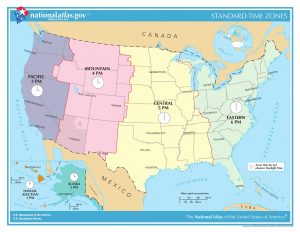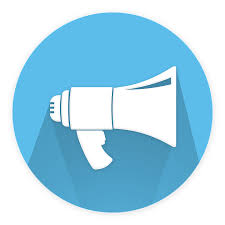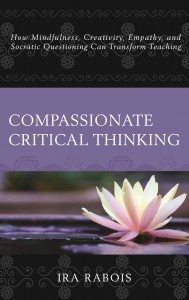 More than 1.7 billion people are active on Facebook. Fifty-three percent of them are female. The average Facebook user in the U.S. was 40.5 years old. These statistics help explain why it is one of the most popular social media platforms used by authors to engage with readers.
More than 1.7 billion people are active on Facebook. Fifty-three percent of them are female. The average Facebook user in the U.S. was 40.5 years old. These statistics help explain why it is one of the most popular social media platforms used by authors to engage with readers.
But what happens when Facebook explodes with news about political scandals, natural disasters, celebrity deaths, or sports? Cutting through the noise with a status update about your new book isn’t easy. And sometimes you need to recognize it isn’t the time to even try.
Knowing when it’s the wrong time is as important as knowing when is the right time to use Facebook for building your audience platform. Having a strategy for your social media efforts as an author will get you a greater return on your investment of time and energy.
 When is the best time to post a status update on Facebook? It’s helpful to know 50% of the U.S. population is in the Eastern Time Zone. Eastern and Central time zones combined represent almost 80% of the U.S. population. It might surprise you, but you will find most people online during business hours, 9 am – 7 pm ET. The best time to post is Saturday and Sunday at the noon hour. You will get 32% higher engagement than any other time online, according to 16 studies. Thursday and Friday afternoons are the next best time with 18% higher engagement. And Friday afternoons post funny or upbeat content for the greatest reach. Posting at 3 pm will get you the most clicks, while 1 pm will get the most shares.
When is the best time to post a status update on Facebook? It’s helpful to know 50% of the U.S. population is in the Eastern Time Zone. Eastern and Central time zones combined represent almost 80% of the U.S. population. It might surprise you, but you will find most people online during business hours, 9 am – 7 pm ET. The best time to post is Saturday and Sunday at the noon hour. You will get 32% higher engagement than any other time online, according to 16 studies. Thursday and Friday afternoons are the next best time with 18% higher engagement. And Friday afternoons post funny or upbeat content for the greatest reach. Posting at 3 pm will get you the most clicks, while 1 pm will get the most shares.
 Recently I was at a conference and attended a session on how to use LinkedIn for building an author platform. The speaker, an author of a book on this subject, arrived a few minutes before his session and left the conference a few minutes after his presentation. He didn’t attend any of the other conference sessions, didn’t engage in conversation with any of the conference attendees, and didn’t even stay for the free lunch. So much for networking. And not a great way to sell books, either. LinkedIn, Facebook, or other social media platforms are an extension of face-to-face relationships, not a substitute for them.
Recently I was at a conference and attended a session on how to use LinkedIn for building an author platform. The speaker, an author of a book on this subject, arrived a few minutes before his session and left the conference a few minutes after his presentation. He didn’t attend any of the other conference sessions, didn’t engage in conversation with any of the conference attendees, and didn’t even stay for the free lunch. So much for networking. And not a great way to sell books, either. LinkedIn, Facebook, or other social media platforms are an extension of face-to-face relationships, not a substitute for them.
Keep the social in social media. Facebook is not the best place to push your book on others. Most people who are online there are interested in social relationships and avoid advertisements and marketing efforts. Use Facebook to expand your social circles and socialize. Act friendly instead of acting like Billy Fuccillo. Your friends will want to know about your writing life and will celebrate your book launch, but they also want to know about your pet cat, what concert you went to, and how your garden grows.
For every ten status updates you post on your personal Facebook profile, make nine of them about something other than you and your book. This way you’ll keep your friends and not wear them out with shameless self-promotions. You can grow your social networks up to 5,000 on your personal profile and there is an unlimited number of people who can follow your profile.
I do recommend you set up a custom URL for your Facebook personal profile as one more step toward solidifying your brand as an author. Here’s how to do this in 7 simple steps.
- Login to Facebook.
- Find Edit Profile on the left in the upper corner and click on it.
- Scroll down to Contact Information and click the edit pencil.
- Find and click on Add/Remove Email. This will take you to the General Account Settings.
- Click Edit to the right of Username. Here is where you enter your personal customization (http://facebook.com/yourname)
- Click Check Availability. If your author name is not available, try adding your middle name or initial.
- Be sure to Save your changes.

What else should be part of your strategy? Like the Facebook Pages of authors you admire, the bookstores where you shop, your public library, the literary journals and magazines you read, the podcasts you listen to, the professional organizations to which you belong, and alumni pages. Consider joining Facebook Groups of relevance to your subject area or subgenre.
If you decide to create a Facebook Page, I don’t recommend doing so until 30-60 days before the release of your book. And before you do, observe how other authors—for better or worse—use their Facebook Pages. Once you’ve created yours, you can ask all your Facebook friends to “like” your new Page. Hopefully you will see a good number of your friends opt in to see more about your career as an author. This is where you can regularly post status updates about your book, events, reviews, interviews, videos, and photos. For every five status updates you post on your Page, make four of them about something other than you. Shameless self-promotion rarely sells books.
A couple of years ago Facebook began to restrict the organic reach of status updates on Pages and now you have to “pay to play.” Instead of everyone who has liked your Page receiving your status updates, only a fraction of them do unless you “sponsor” your post with a dollar amount. Recently Kurt Gessler at the Chicago Tribune posted a widely read blog piece about how the average reach of their status updates fell dramatically since the beginning of this year.
You might be inclined to increase the number of posts per day when your reach goes down. Resist the temptation. One of the take-aways from the Tribune’s study of their Facebook reach is that you should post fewer status updates but with greater quality content that delivers value to your audience’s lives.
 You can give your content a lift by dovetailing with Facebook-defined trending topics. For example, when “meditation instead of detention in schools” became a trending topic, it was the perfect time for Ira Rabois to share a status update about his book, Compassionate Critical Thinking, and emphasize it helps teachers bring mindfulness into the classroom and the benefits of doing so. Focus less on “evergreen” status updates and select timely, authentically engaging content.
You can give your content a lift by dovetailing with Facebook-defined trending topics. For example, when “meditation instead of detention in schools” became a trending topic, it was the perfect time for Ira Rabois to share a status update about his book, Compassionate Critical Thinking, and emphasize it helps teachers bring mindfulness into the classroom and the benefits of doing so. Focus less on “evergreen” status updates and select timely, authentically engaging content.
Contempo, the social media marketing firm which works with George Takei on his Facebook Page, posted a blog earlier this month about the downward dip in the reach for his Page due to changes in the algorithm. In January and February of 2017, they observed a drop of roughly 20 percent in post reach even as the number of people who liked the Page climbed steadily and the number of posts per day increased. The strategy which increased George Takei’s reach in March and April turns out to hold an important lesson for authors. Prioritizing content quality and creating an overall enjoyable reader experience is the key. Instead of pushing a message, have something to say that pulls readers to your writing.
If you’re frustrated with Facebook, you’re not alone. Step back and strategize.

Thank you so much for this. Every time an email appears scoring my current FB reach/action, I cringe. Because I’ve tried all sorts of things but have not been able to control the numbers. But it is good to know some other things to try, like changing my posting times/habits. I like the dovetailing idea as well. Will try. Cheers!